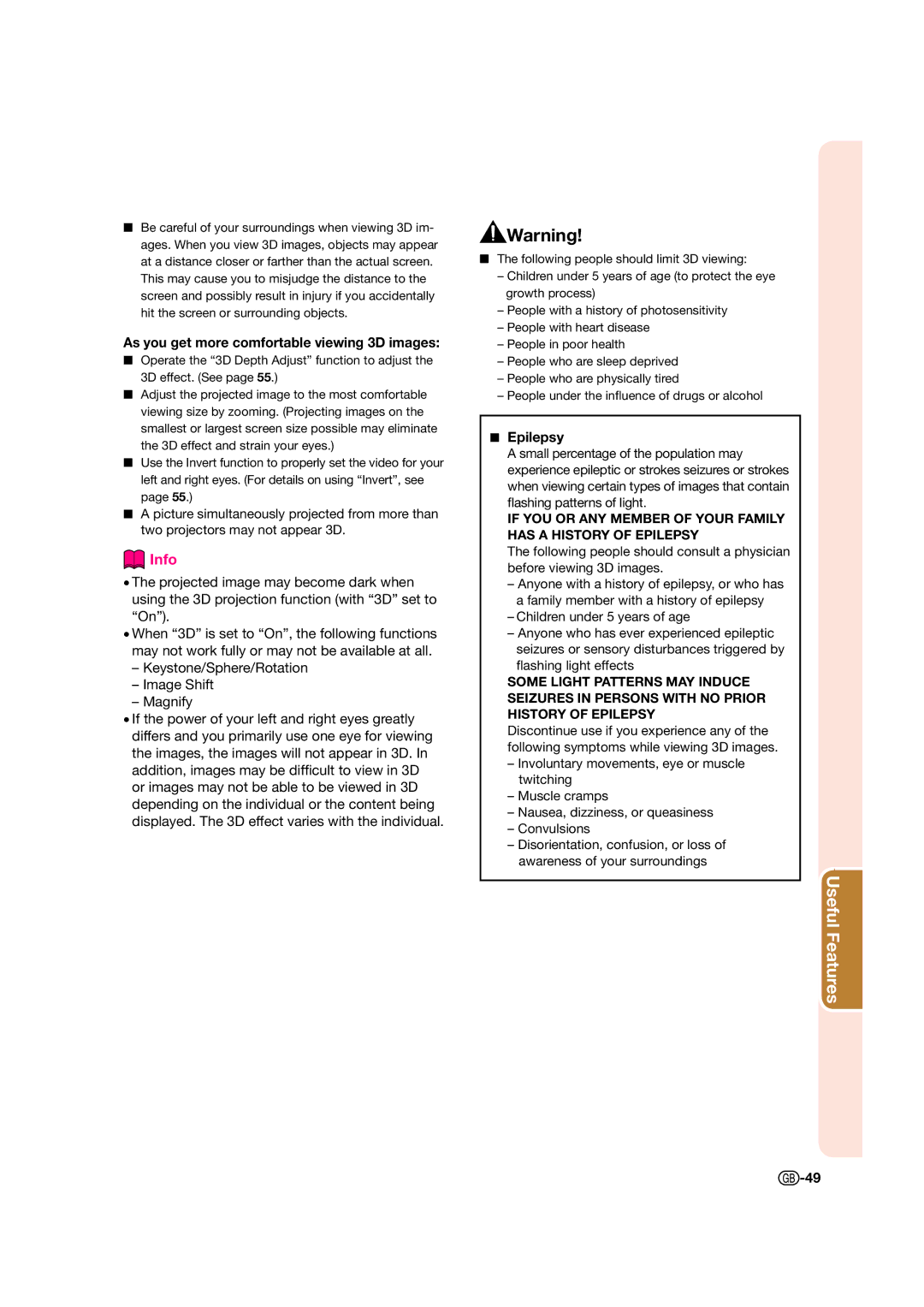
Be careful of your surroundings when viewing 3D im- ages. When you view 3D images, objects may appear at a distance closer or farther than the actual screen. This may cause you to misjudge the distance to the screen and possibly result in injury if you accidentally hit the screen or surrounding objects.
As you get more comfortable viewing 3D images:
Operate the “3D Depth Adjust” function to adjust the 3D effect. (See page 55.)
Adjust the projected image to the most comfortable viewing size by zooming. (Projecting images on the smallest or largest screen size possible may eliminate the 3D effect and strain your eyes.)
Use the Invert function to properly set the video for your left and right eyes. (For details on using “Invert”, see page 55.)
A picture simultaneously projected from more than two projectors may not appear 3D.
 Info
Info
•The projected image may become dark when using the 3D projection function (with “3D” set to “On”).
•When “3D” is set to “On”, the following functions may not work fully or may not be available at all.
–Keystone/Sphere/Rotation
–Image Shift
–Magnify
•If the power of your left and right eyes greatly differs and you primarily use one eye for viewing the images, the images will not appear in 3D. In addition, images may be difficult to view in 3D or images may not be able to be viewed in 3D depending on the individual or the content being displayed. The 3D effect varies with the individual.
![]() Warning!
Warning!
The following people should limit 3D viewing:
–Children under 5 years of age (to protect the eye growth process)
–People with a history of photosensitivity
–People with heart disease
–People in poor health
–People who are sleep deprived
–People who are physically tired
–People under the influence of drugs or alcohol
Epilepsy
A small percentage of the population may experience epileptic or strokes seizures or strokes when viewing certain types of images that contain flashing patterns of light.
IF YOU OR ANY MEMBER OF YOUR FAMILY HAS A HISTORY OF EPILEPSY
The following people should consult a physician before viewing 3D images.
–Anyone with a history of epilepsy, or who has a family member with a history of epilepsy
–Children under 5 years of age
–Anyone who has ever experienced epileptic seizures or sensory disturbances triggered by
flashing light effects
SOME LIGHT PATTERNS MAY INDUCE SEIZURES IN PERSONS WITH NO PRIOR HISTORY OF EPILEPSY
Discontinue use if you experience any of the following symptoms while viewing 3D images.
–Involuntary movements, eye or muscle twitching
–Muscle cramps
–Nausea, dizziness, or queasiness
–Convulsions
–Disorientation, confusion, or loss of awareness of your surroundings
Useful Features
![]() -49
-49
